
Growing Daubenton perpetual cabbage
All our tips for planting and harvesting this perennial cabbage regarded as a perpetual vegetable.
Contents
Tree kale, thousand-headed kale, perennial kale, perpetual kale… Daubenton’s kale (Brassica oleracea var. Ramosa) is known by various names. And for a few decades, or even centuries, as it is an ancient variety from the Brassicaceae family, once used as fodder for livestock. Today, it is making a grand return to gardens, brought back into fashion by permaculture. This kale has everything to please: hardy down to -15 °C, it remains in the vegetable garden all year round, unaffected by the weather. With a pleasant broccoli-like taste, the leaves of Daubenton’s kale, slightly bluish and frilly, can be harvested as needed and are consumed raw or cooked. Very easy to grow, this perennial kale can reach a height of 1 metre and stays in place for 4 to 7 years. Highly tolerant, it requires very little care. As a final advantage, it is quite resistant to flea beetles and cabbage whites. Don’t hesitate any longer and make a (permanent) place for Daubenton’s kale in your vegetable garden. We’ll explain how to grow it.
Discover other perennial vegetables in our podcast:
“`html
“`
Rather lovely, this Daubenton cabbage!
Cabbage Daubenton… The curious might rightly wonder why this cabbage bears such a name, especially with a capital letter. Those well-versed in botany will certainly know Louis Jean-Marie D’Aubenton, known as Daubenton, a French naturalist, botanist, and physician, who was appointed the first Director of the Muséum National d’Histoire Naturelle at the end of the 18th century. Daubenton was indeed called by Buffon to the King’s garden as early as 1742. He is credited with the introduction of the Merino sheep and likely the identification of this cabbage.
As a member of the Brassicaceae family, Cabbage Daubenton stands out from its relatives due to its longevity and development. Cabbage Daubenton is, in fact, a perennial cabbage with evergreen foliage that is distinguished by its ramified stature, provided it has numerous stems. Its ovate leaves with dentate edges, perched on long petioles, give it the appearance of a shrub-like plant that can reach over 1 metre. This Cabbage Daubenton does not form a head.

Over the years, Cabbage Daubenton acquires a shrub-like stature
Beyond its flavour, which is reminiscent of broccoli, straddling the line between sweet and bitter, the main advantage of Cabbage Daubenton lies in its ability to withstand the coldest temperatures, down to -15 °C. Admittedly, in winter, the leaves disappear but return the following spring. And this occurs over a cycle that spans 4 to 7 years. By what miracle, you may ask? Simply because Cabbage Daubenton rarely flowers. And when it does flower and sets seed, that signals the end!
There are different varieties of Cabbage Daubenton. The typical variety has slightly bluish leaves, while ‘Variegata’ and ‘Popof’ feature light green leaves edged with cream, making them decorative plants suitable for cultivation outside the vegetable garden.
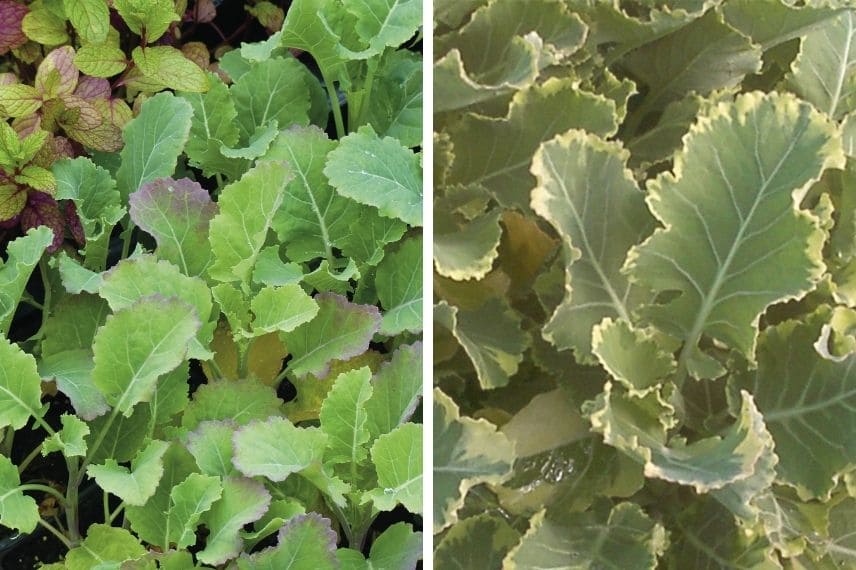
The typical variety of Cabbage Daubenton has slightly bluish leaves, while those of the varieties ‘Popof’ or ‘Variegata’ are cream-edged
Read also
6 Chinese cabbages to discoverHow to plant Daubenton cabbage?
Do you know how to plant the Daubenton cabbage? It’s easy but hard to resist… Due to its size, the Daubenton cabbage needs space to develop. Moreover, the lower leaves can naturally layer themselves. It also requires brightness, so it should be placed in a sunny or partially shaded and spacious location. Each Daubenton cabbage plant should be spaced at least 60 cm apart and planted in rows spaced one metre apart.
As for the soil, it must be well-drained, cool, and rich in organic matter. However, this perpetual cabbage is tolerant of soil type. It can be acidic to alkaline, even calcareous, it doesn’t mind.
Planting takes place in spring, in April or May, using young plants. Indeed, this cabbage has the particularity of not being sown. It is planted as follows:
- Dig a hole three times the size of the root ball
- Place the cabbage in the hole, burying part of the stem to help it root
- Cover with soil
- Firm down and water thoroughly.
Discover other Cabbage plants
View all →Available in 0 sizes
Available in 2 sizes
Available in 3 sizes
Available in 1 sizes
Available in 1 sizes
Available in 1 sizes
Available in 1 sizes
Available in 1 sizes
Available in 1 sizes
Available in 1 sizes
What care does perpetual cabbage require?
Tolerant, easy-going, resilient, durable… Daubenton cabbage has all the qualities needed to hold a prominent place in a garden. It is certainly for these reasons that it has made a strong comeback in permaculture gardens, having nearly disappeared after the war.
Daubenton cabbage requires little care to thrive. However, you will need to water it regularly, especially during dry spells. As the soil should not dry out, mulching is recommended, using grass clippings. Watering should be done at the base and not on the leaves to avoid the risk of fungal diseases. It also appreciates a little hoeing from time to time.
In autumn, a supply of compost or well-decomposed manure is welcome. Apply it by surface scratching.
Hilling two to three times a year helps Daubenton cabbages become sturdier to withstand the elements.
Not very susceptible to diseases and pests, Daubenton cabbage is, however, highly favoured by slugs and snails. Feel free to consult Ingrid’s advice sheet to fight effectively and naturally against these invaders.
The harvest of perennial cabbage
About six months after planting, the first leaves of Daubenton cabbage can be harvested. The terminal shoots, which are more tender, are picked from September to November and then from March to May. In summer, the leaves become tougher and more bitter, but remain largely edible.

Harvesting Daubenton cabbage is done as needed by picking the young shoots
These leaves are harvested as needed. This picking allows the shoots to regenerate and stimulates the appearance of new shoots. With Daubenton cabbage, the more leaves are harvested, the more they regrow. However, they only keep for 2 or 3 days in the vegetable drawer of the refrigerator.
Multiplying Daubenton cabbage is easy!
Daubenton cabbage has the ability to naturally layer itself after a few years. So let it do its thing and take a few young plants to renew your cabbage patch.
It is also possible to easily propagate Daubenton cabbage by replanting the base of the stems directly in place or in pots. Ideally, take cuttings of 8 to 10 cm and replant in summer.
Sowing is more difficult simply because the seeds are rare.
A cabbage prized by chefs
If the Daubenton cabbage has made a comeback in the vegetable garden in recent years, it has also returned with a vengeance to the plates of top chefs. Young leaves are eaten raw to enhance salads. Cooked, they can be prepared like spinach, stir-fried or sautéed, or even in a wok. They can be included in soups. The suckers can even be cooked like asparagus.
The Daubenton cabbage has a rather mild flavour.
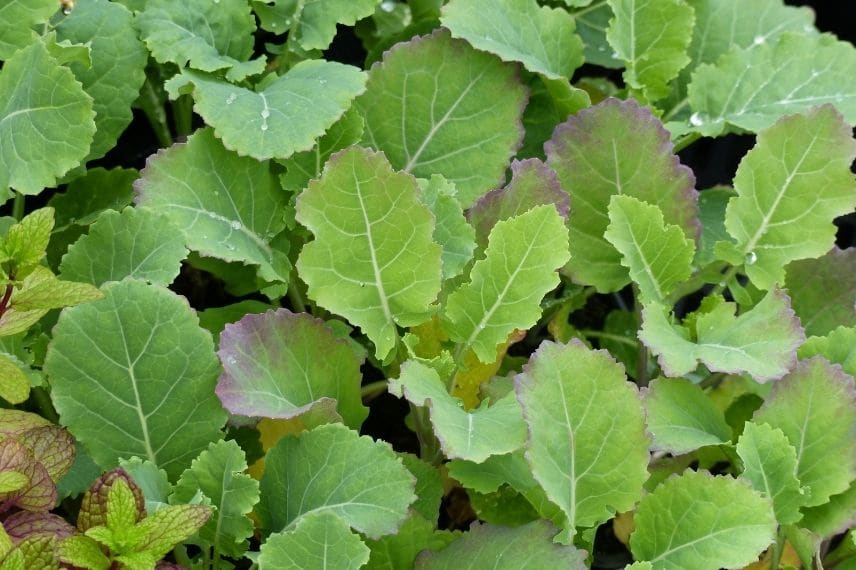
The leaves of Daubenton cabbage can be consumed raw or cooked
- Subscribe!
- Contents
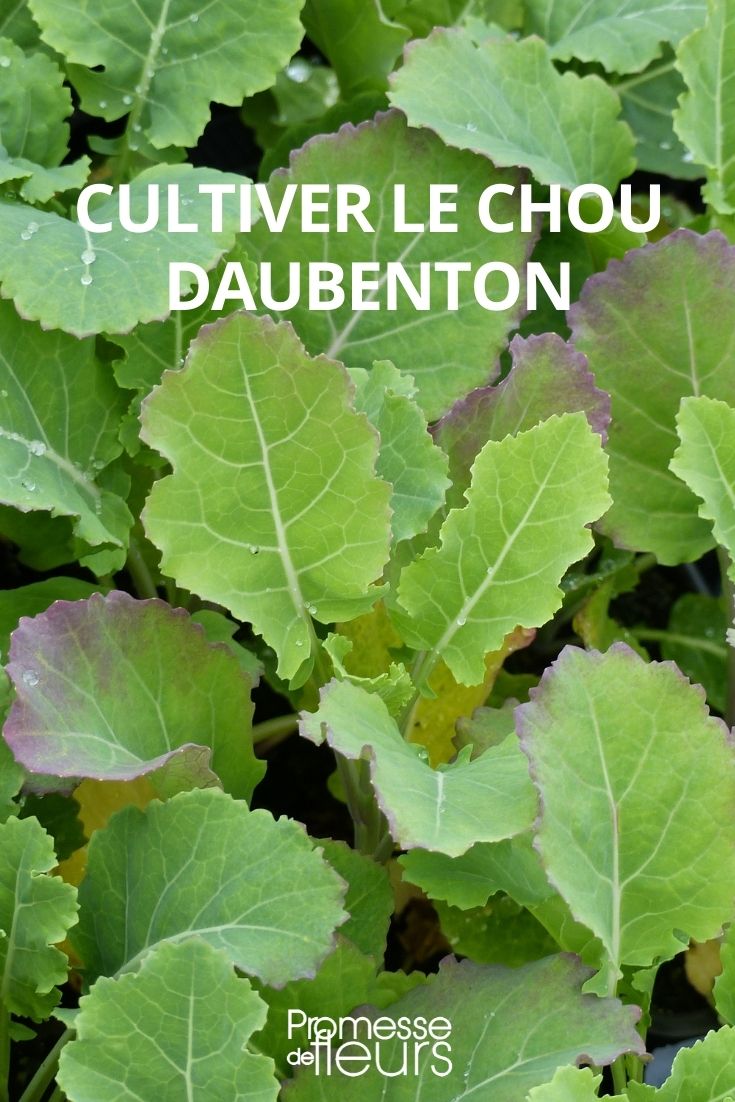































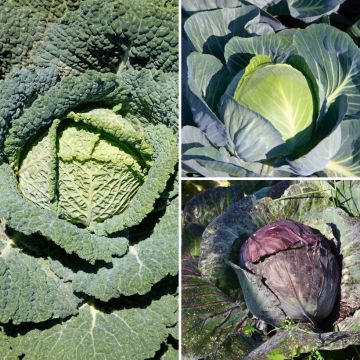
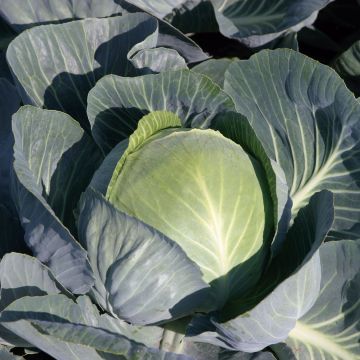


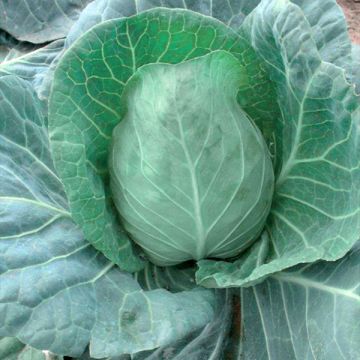
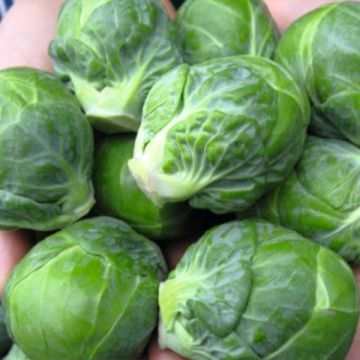
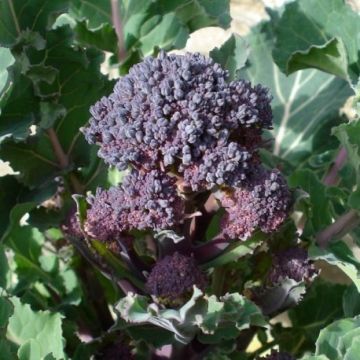

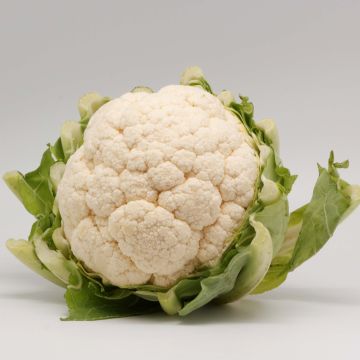

Comments